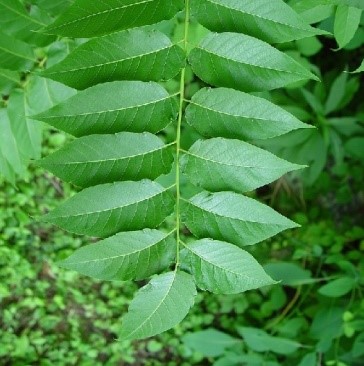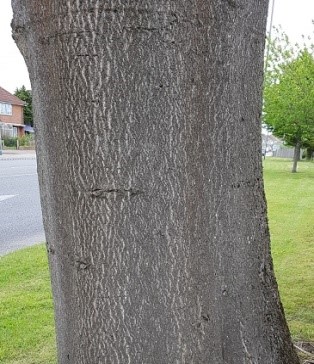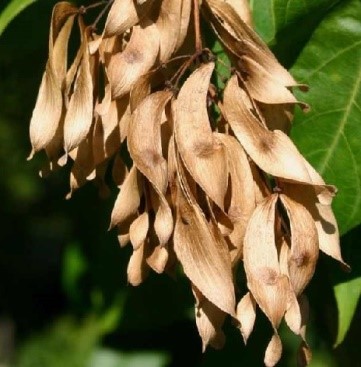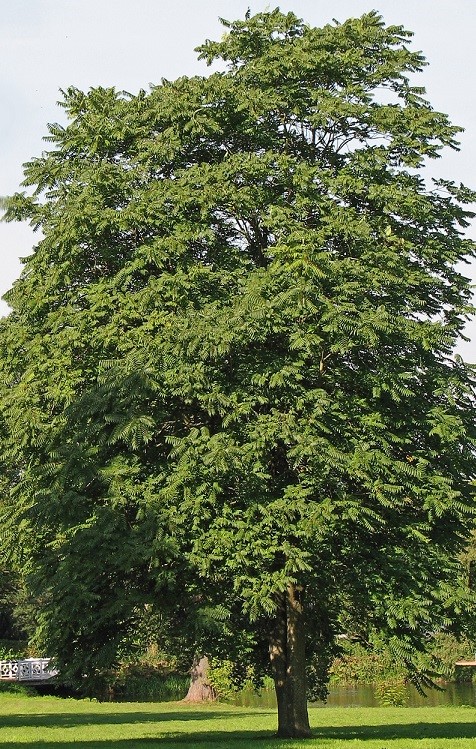Trees
Ailanthus altissima (Mill.) Swingle
Ailanthus altissima (Mill.) Swingle
Description :
A deciduous tree that
sometimes grows with a crooked trunk to a height of 20 m, but heights of 6 to
10 m are more common. The crown is usually open. The leaves are pinnately
compound, long approximately 30 to 40 cm.
It is dioecious. The flowers are borne in terminal panicles. The fruit
is 3.5 to 5 cm in diameter. Flowers occurs in April and June, while fruit
matures between May and June. It appears to be disease and insect free with the
exception of some tent caterpillar defoliators. It is reproduced from seed,
cuttings and root suckers. Seed is small and can be kept in cold storage in
closed containers for 2 years without loss of viability. A fast-growing tree
that grows to a height of 3 to 4 m in a period of 5 months. Reports of 25 years
old stands with average diameters of 36 cm and height of 13 meters are not
uncommon. Coarse textured straight grained. Soft, non-durable wood having white
to pale yellow color, with specific gravity of 0.40 and a calorific value of
4885.
Distribution :
The tree is native to
China and Japan. It has been successfully cultivated throughout the world. It
has become naturalized in Pakistan and can be found almost anywhere you travel
from 0 to 1700 m elevation. It has been planted in Islamabad as avenue tree and
quite extensively in Hazara (N.W.F.P.) in erosion control works. A moderately
intolerant tree that will stand some shade and is extremely aggressive. It grows
well on all kinds of soils including porous, dry, hard, wet, acid alkaline,
rocky, swampy and marginal sites in general. It is adapted to a precipitation
zone of 350 to 600 mm/yr or more, in a temperature range of -10 to 40°C and is
frost hardy. It prefers a semi-arid temperate, sub-tropical, sub-humid, cool,
sub-tropical monsoon climate from 0 up to 1700 m elevation.
Uses :
A very aggressive tree
that will do well on very harsh sites. It has survived air polluted
environments and consequently is planted in densely populated urban area and
large cities. Ideally suited for shade, shelterbelts and erosion control,
especially in areas of high industrial air pollution. Useful farm forestry tree
on harsh sites. Also used for erosion control, furniture, charcoal, and tannin.



